Soil color
Amber Anderson
- Identify major factors contributing to soil color
- Outline how to use a munsell soil color book
- Use the soil color to potential challenges to management for a given use
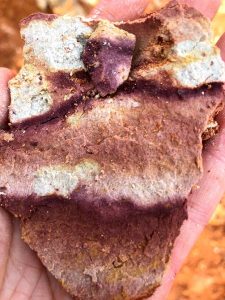
Soil color is one of the first properties many people identify when asked to describe a soil. Although we may think of it as uniform, soil color can change quickly, both when moving down into the soil and across the landscape. These changes can be indicators of important processes happening in the soil. For example, grey colors may indicate wetness, and it therefore may not be a good place to construct a basement.
Major factors contributing to soil color include accumulation of organic material and accumulation of materials. This is described in more detail below.
Accumulation of organic material
Accumulation of organic material turns the soil darker, as is commonly found in the surface layers. This may be several feet in some prairie-derived soils as pictured to the left, or even the whole visible depth, especially in cases like a floodplain or footslope receiving additional materials.
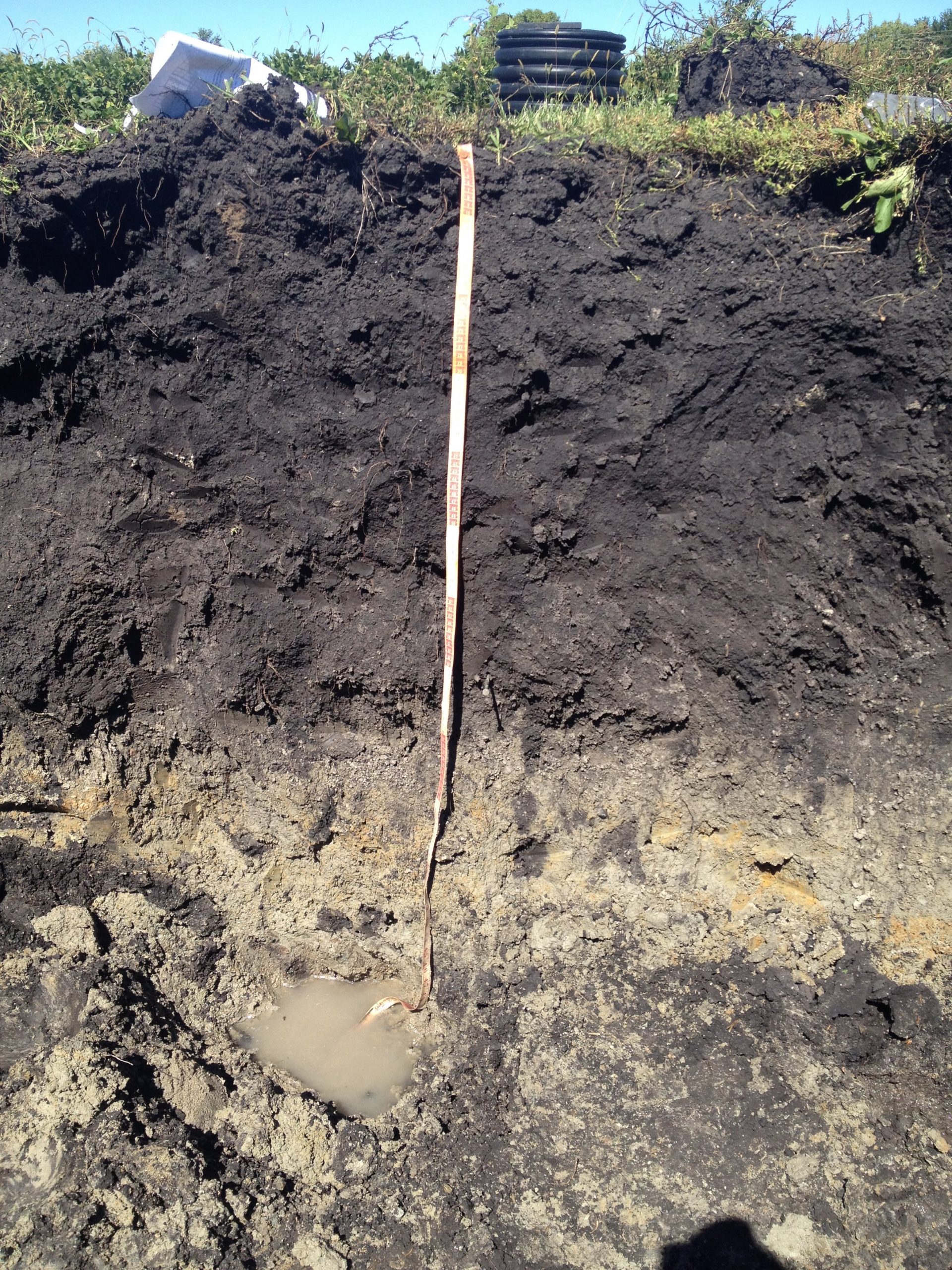
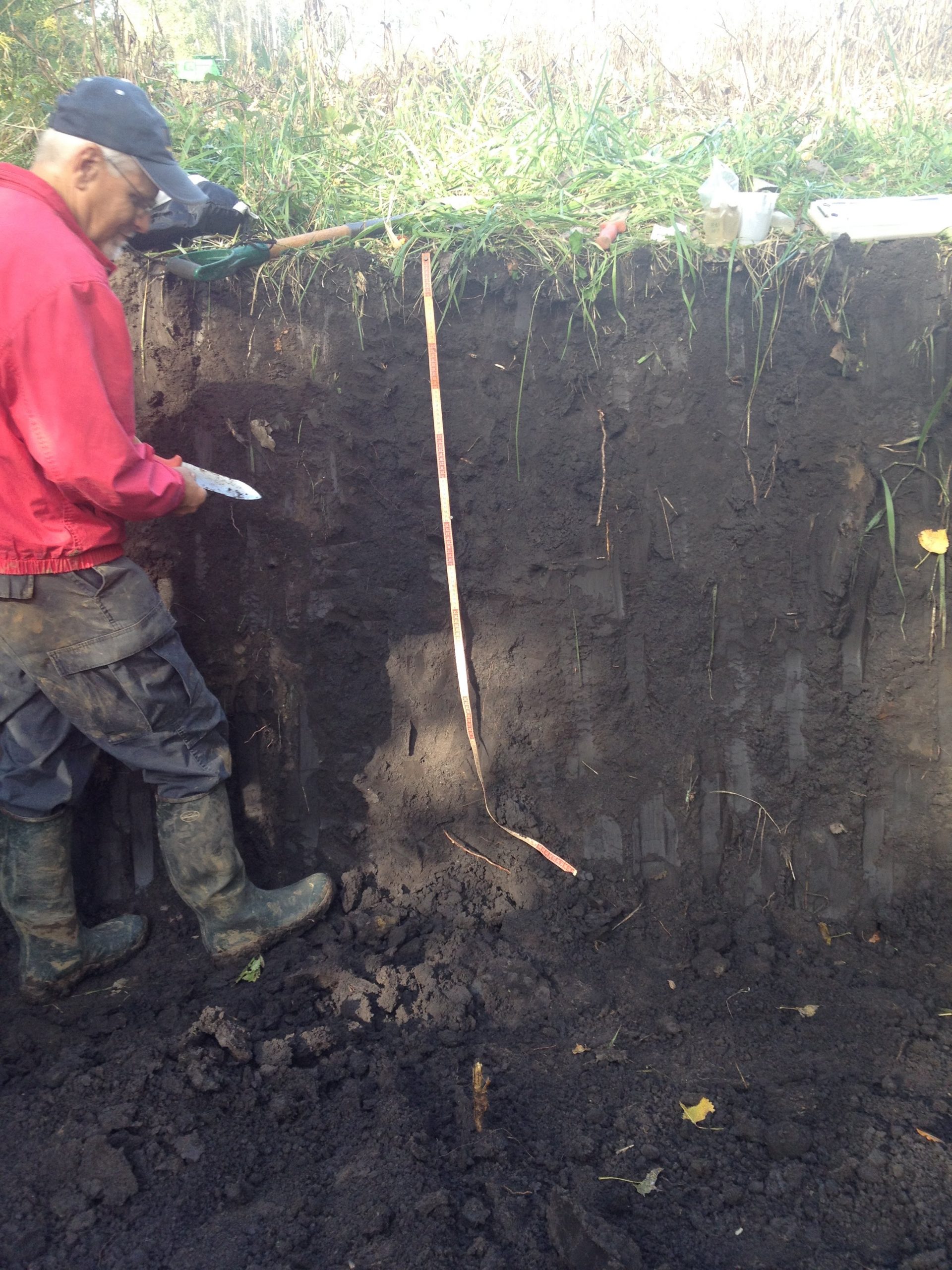
Redox reactions
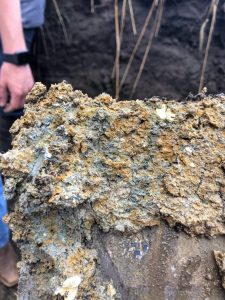
Redox, short for reduction-oxidation, is due to changes in soil oxygen levels, generally from having water-filled pores rather than air-filled pores. Oxygen diffuses slowly through standing water, and microbial activity can use up existing supplies causing reduced or anaerobic conditions. If the reduced iron reaches oxygen, like a root channel or near the top of the water table, it will oxidize, creating a red spot in the soil. These spots are visible even in dry conditions, providing a record of normal conditions, regardless of recent rainfall.
Accumulation of materials
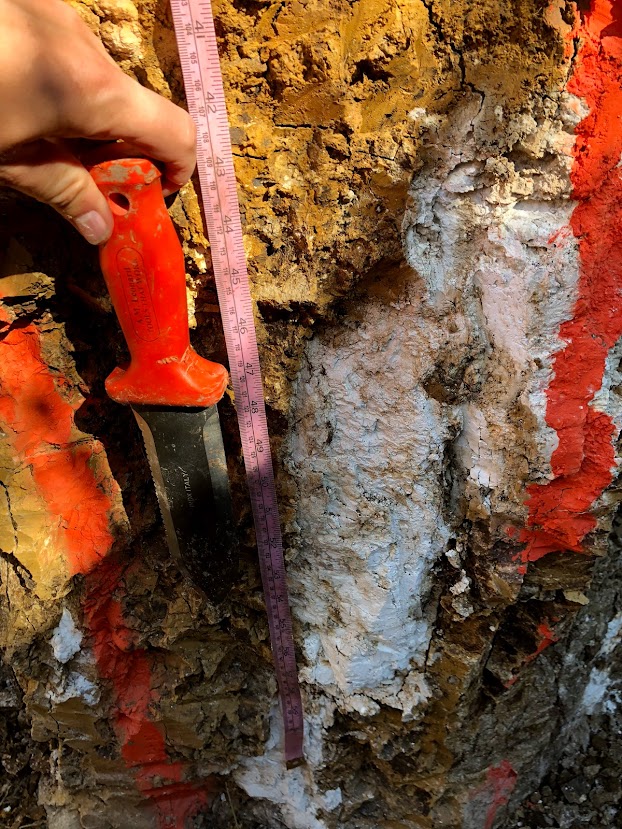
Accumulations of materials, such as calcium or gypsum, can also color soil in certain circumstances. In the case of calcium or gypsum, white colors appear, frequently in the B horizon in semi-arid conditions or places on the landscape where water moves in carrying calcium, gypsum, or other salts, and evaporates off. Since the salts cannot evaporate, they remain in the soil.
In semi-arid regions, rainfall is sufficient to carry materials, such as calcium, out of the surface layer, but insufficient to leach materials completely out of the profile, leading to an accumulation generally in the B horizon.

Munsell soil color book
Since simple color description works like “dark” or “red” won’t mean the same thing to different people, soil scientists use a standard notation to indicate a soil’s color.
Soil color is formatted this way: Page/Value/Chroma
Example: 10YR 2/1
- Page: mix of colors or hue
- Value: lightness or darkness
- Chroma: intensity
How to use a Munsell Soil Color book
Watch this overview video at: https://iowastate.instructuremedia.com/embed/3f0f8ff0-f570-4635-8df1-0d1ce0ced869
- Color is important as it indicates potential processes occurring in the soil
- Accumulations of material, redox reactions, and minerology impact observed colors
- The Munsell soil color book is a tool used to standardize soil color across locations

